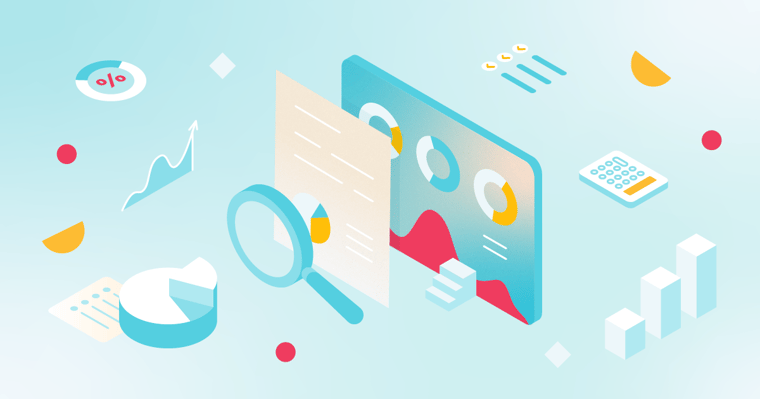How to Leverage Proposal Analytics to Tailor Your Follow-Up Emails
August 2, 2024Last updated on October 1, 2024

Understanding how prospects engage with proposals allows your sales team to craft follow-up emails that address prospects' specific interests and concerns. Whether prospects spend more time on pricing, services or case studies, this data is invaluable.
Instead of sending generic a follow-up email after sending the proposal, your reps can deliver personalized messages that show they're attentive to prospects' needs and dedicated to providing the best solutions.
Using proposal analytics, reps can transform a standard follow-up email into a powerful tool that resonates with prospects and nudges them closer to closing the deal.
Understanding Proposal Analytics
Proposal analytics help you track and understand how prospects interact with your sales proposals. Proposify's analytics include metrics such as:
- When the proposal is opened
- How many times it's opened
- Which sections of the proposal are viewed most often
- How long prospects spend reading each section
- Which members of the prospects' team are interacting with the proposal
- How many times prospect team members come back to review the proposal
- Averages of time to view, length of viewing, and views per proposal

These insights are pure gold because they reveal what prospects care about most, and allow reps to respond accordingly.
How to Tailor Follow-Up Emails
Tailoring your follow-up emails using proposal analytics is like having a secret sauce that makes your communication irresistible to prospects.
Dive Into the Data
Look at which sections of your proposal were viewed the most. Did the prospect spend a lot of time on the pricing page? Or were they more interested in the case studies and testimonials?
Let's say the prospect lingered on the pricing details. Your rep's follow-up could address potential concerns about cost and emphasize the value and return on investment (ROI) your solution offers.
They might say something like, "I noticed you spent some time reviewing our pricing options. I'd love to discuss how our service can deliver exceptional value and fit within your budget."
If the prospect focused on case studies, your team member could highlight success stories relevant to the prospect's industry. This shows they're not just sending a generic message, but one that's thoughtfully tailored to the prospect's needs.
The rep could write something like, "I saw you were interested in our case studies. Here’s another success story that might resonate with you."
Time It Right
Your reps can use proposal analytics to see when the prospect reviewed the document. If they viewed it multiple times over a few days, that’s a strong signal of interest.
A follow-up email can acknowledge this and offer to answer questions: "I noticed you revisited our proposal a few times this week. I’m here to help with any questions you have or to provide additional details."
The key is to allow the prospect some time to review the proposal, but not so much time that they feel ignored, or worse, that they seek out a competitor.
By the same token, if the prospect has had the proposal for a few days and hasn't even opened it, your rep can send a follow-up email on the proposal in general, asking whether the prospect has questions or needs help.
Using proposal analytics this way, your team member's follow-up email will feel less like a sales pitch and more like a helpful conversation.
Do's and Don'ts of Using Proposal Analytics
The way your reps use proposal analytics can make or break deals.
Do Personalize Follow-Ups
Your reps should use the insights from proposal analytics to craft emails that address the prospects' specific interests. If they spent a lot of time on the pricing section, reps need to talk about value and ROI. If prospects were engrossed in case studies, reps can share additional success stories.
Do Act Promptly
Timing is everything. When your team member sees that a prospect has reviewed a proposal, it could be an opportunity to follow up while the proposal is still fresh in the prospect's mind. A prompt, relevant email shows your team is attentive and eager to help.
Do Ask Questions
Reps can use follow-ups to engage prospects in conversation. They can ask whether the prospects have any questions about the sections they viewed most, or need any additional information. This can open the door to deeper discussions and help address any hesitation.
Don’t Be Overly Aggressive
While it’s important to follow up, your reps don’t want to come across as pushy. Rather than immediately sending a follow-up email after the proposal is sent, your reps need to respect the prospect’s time and space and allow some time for review. Use the data to be helpful and informative rather than overwhelming.
Don’t Ignore the Data
Proposal analytics is a goldmine of information. Don’t let your reps overlook it by sending generic follow-ups. Tailoring their emails based on actual data can significantly increase their chances of success.
Don’t Forget to Follow up on Follow-Ups
If a prospect engages with a follow-up email, the rep must be sure to continue the conversation. Proposal analytics is not just a one-time tool, but a continuous process that can help your team build stronger relationships over time.
Get Analytical with Proposify
Tired of not knowing what happens with proposals once they're sent? Consider Proposify. It has all the features your team needs to track proposal engagement and refine sales strategies. Its insightful data will help reveal prospect behavior and help boost closing rates. Our proposal software gives you total control and visibility into your proposal process, from start to finish.
Schedule a demo today, and see how you can improve every outcome with proposal analytics.

Michelle Lowery is a B2B and B2C writer and editor with more than 15 years of experience. She believes empathy is the key to high-performance content. Connect with her on LinkedIn:



